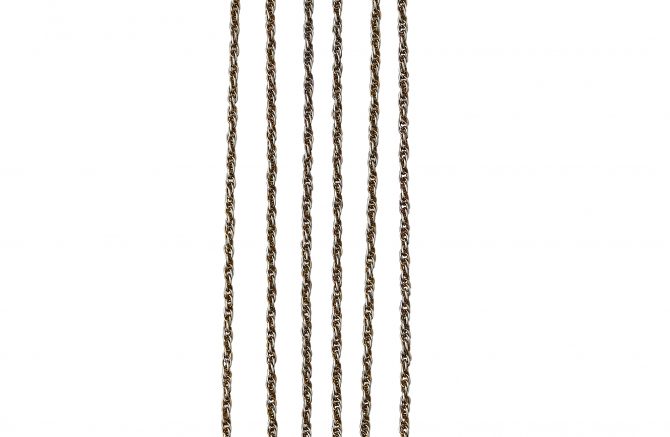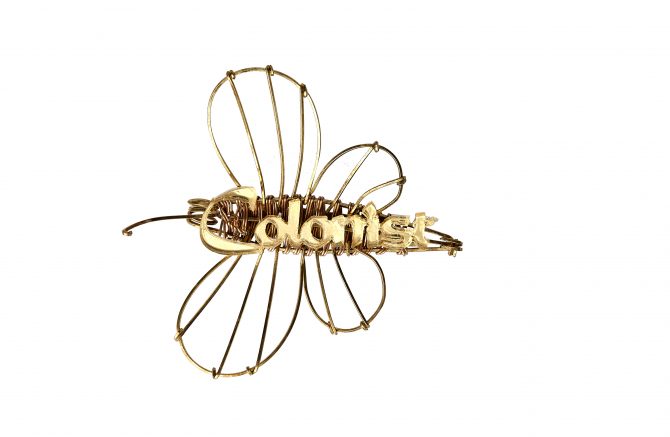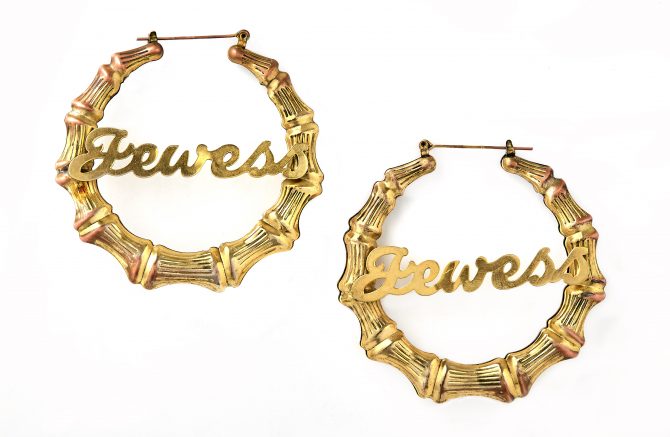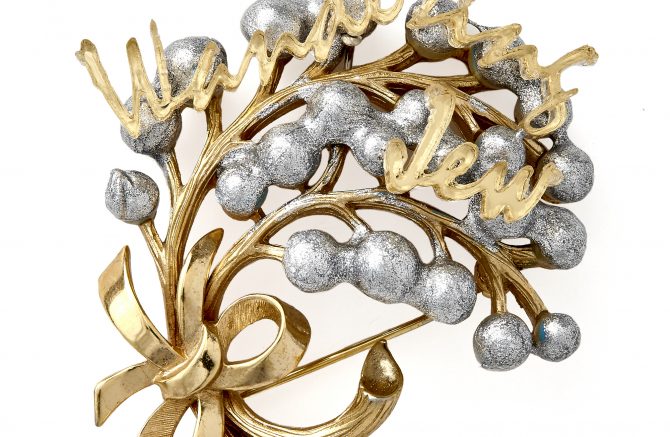Ruthless/Rootless Cosmopolitan (Apotropaia)
Custom name plates, jewelry chain, necklace.
Apotropaia
apotropaia | ˌapətrəˈpāia
objects that supposedly have the power to avert evil influences or bad luck: apotropaic statues. ORIGIN late 19th century: from Greek apotropaios ‘averting evil’, from apotrepein ‘turn away or from’.
Amulets intended to ward off the evil eye, from the hamsa (Hand of Miriam or Hand of Fatima), to evil eye pendants, can be traced back to blow-pipe painted hand stencils on cave walls in the Ice Age, wearing a shiny object, especially one that anticipates the evil eye’s vitriol and envy, has long been considered a means of protecting the wearer, the shiny object drawing the gaze of the potential evil eye away from the person, to the object. These works follow that tradition of Jewish amuletic jewelry, using in place of (or in addition to) hamsas and evil eye stones, nameplates emblazoned with slurs, both outdated, reappropriated slurs such as “Jewess,” or “Yiddishe Mama” and contemporary alt-right creations such as “Renegade Jew,” “Demon Jew” and the echo triple parenthesis ((( ))).
The potential of transforming hateful words holds great influence over my thinking with this piece. Lenny Bruce’s controversial 1940s comedy bit, where he would scream racial and ethnic slurs of every variety at the audience was intended to remove the hurtful power from the words, while A Tribe Called Quest’s track “Sucka N***A” off the 1993 Midnight Marauders album, dealt with the tension around reclaiming, reappropriating and weaponizing vituperative language. While these works are specific to my experience as a Jewish woman, each and every ethnicity has some kind of slur, a word intended to harm, waiting to be declawed, reclaimed, it’s impact anticipated and reversed.















